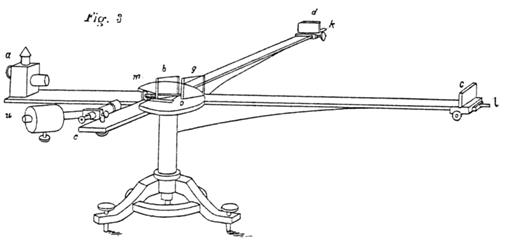Guest post by Nicky Dean, Team Manager Physics, Nature Communications.
For this week’s set of experiments in our poll we will stick to the 19th century. Our first entry is from 1839, when Alexandre Edmond Becquerel invented the photovoltaic cell at the tender age of 19. While playing around in his father’s lab, Becquerel created an electrolytic cell from silver chloride in acid. After connecting it to platinum electrodes, he found that exposing it to light generated an electrical current. Currently, photovoltaics is one of the most active themes in materials research, as it may be key in our challenge to produce enough clean energy for the world for generations ahead.
Skipping ahead to 1887, our next experiment also unveiled some of the intricacies of the interaction between light and matter. While testing Maxwell’s theory of electromagnetic waves, Heinrich Hertz constructed a receiver device based around a gap between two metallic electrodes across which a spark could propagate. He realised that light promoted spark production but also found that this could be suppressed by inserting a piece of glass between the light source and his receiver. Crucially, this wasn’t the case for a sheet of quartz and from this, Hertz deduced that ultraviolet light, which glass absorbs but quartz does not, was responsible for easing the ejection of electrons from the metal electrodes, forming his sparks. Thus he discovered the photoelectric effect, in which electrons can be emitted from a metal by light.
Later on, Albert Einstein would explain this effect as arising from the quantum nature of light. Hertz didn’t think his findings were of any practical use and that they merely served to support Maxwell’s theories. Ironically, his investigations would eventually lead to such world-changing inventions as telegraphy, radio, and television.
While Hertz was busy submitting his findings to the Annalen der Physik, our final experiment was taking place on the other side of the Atlantic. The growing understanding of light throughout the 19th century led people to believe that light needed a medium to transit through, much as sound travels through air and waves ripple across water. Scientists called this medium the “luminiferous aether” and it was believed to permeate all of space. As such, while the Earth was whizzing around the Sun, it must be moving relative to the aether and so it must surely be possible to detect its presence.
Albert Michelson designed an instrument that he hoped would do just that. The Michelson interferometer takes light and splits it into two perpendicular but equal length arms. The light is then reflected back from mirrors at the end of each arm and combines again to form an interference pattern on a screen. If the aether behaved as was expected, light travelling down the arm pointing in the same direction as the Earth is travelling through the aether would take longer to get back to the screen than light travelling perpendicular to it. Therefore, as the Earth propagated through space, Michelson expected to see a shift in the interference pattern. He teamed up with fellow scientist Edward Morley to construct a high-precision version of the Michelson interferometer that should have been sensitive enough to measure the calculated shift.
In the end, no significant shift in the interference pattern was detected, making the Michelson-Morley experiment possibly the most important null result ever recorded, especially as it supported the theory of special relativity that would be formulated two decades later.
Experiments covered this week:
1839 Becquerel’s creation of the photovoltaic cell
1887 Hertz’s discovery of the photoelectric effect
1887 Michelson-Morley interferometer to detect motion relative to the ether
Next week Maria Maragkou will write about Roentgen’s first X-ray image and observation of the Compton effect, among others.
